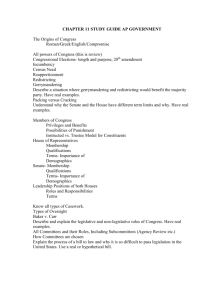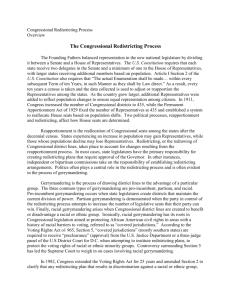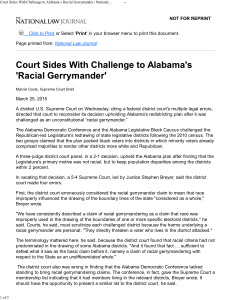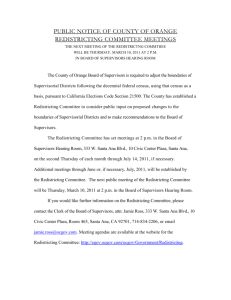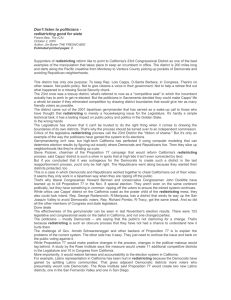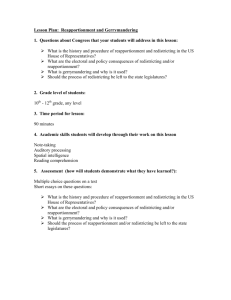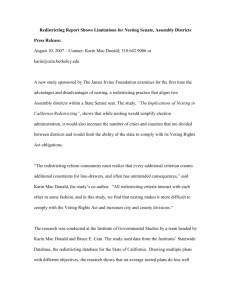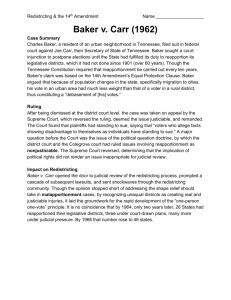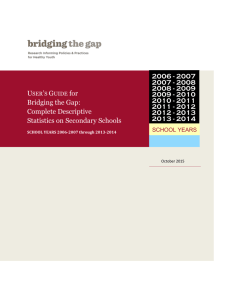Legislative Politics
advertisement
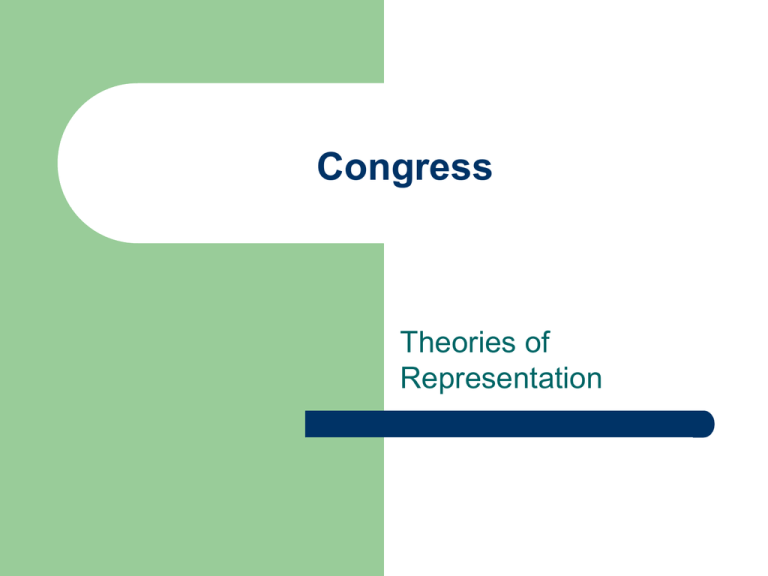
Congress Theories of Representation Today Bare-bones basics of Congress What does it mean to “represent” someone (or some group) politically? What factors determine who represents us in Congress? Bicameral Legislature House 435 Representatives 1 per geographic district 2 year terms Senate 100 Senators 2 per state 6 year terms Business of Congress A Day in the House of Reps http://clerk.house.gov/ What Does Representation Mean? “Represent”: to act in place of or on behalf of someone else “Constituency”: the group on whose behalf the legislator acts Three Big Questions About Representation Does the idea of democratic representation allow legislators to do what is good for us, rather than what we want? – Should members of Congress serve as “delegates” or as “trustees”? Whose “best interests” matter? Is “agency representation” enough, or is “sociological representation” necessary? Theories of Representation: Delegate v. Trustee Delegate: Someone who acts in accordance with our wishes Trustee: Someone who acts to best protect our interests (even if we’re not happy with it) – Example: Balancing the budget and raising taxes Theories of Representation: The Importance of “Constituency” If legislators are acting in our best interests, who has standing? – – – – Only voters in the legislator’s district? Everyone in the legislator’s district, both parties, voters and non-voters? The nation as a whole? Example: “pork barrel legislation” Theories of Representation: Descriptive v. Substantive Ways of creating “policy congruence” (delegate representation) Descriptive – Shared background and experience = shared political preferences Substantive (Agency) – Electoral accountability is enough to force policy congruence But . . . Is electoral pressure enough to force policy congruence, or is descriptive representation necessary for true representation? Are there benefits to descriptive representation that extend beyond policy outcomes? Who Represents Us: Important Factors to Remember Who runs – – – Incumbency advantage – – – Access to money Access to support Time and “social capital” Money Name recognition and constituency service Controversy over term limits – U.S. Term Limits v. Thornton Redistricting – The art of the “gerrymander” Redistricting: The Original Gerrymander Redistricting When and why – – Every 10 years (now – Baker v. Carr) – following REAPPORTIONMENT In response to legal challenges Redistricting How it’s done – – Political gerrymandering – favoring the party in power in the state legislature Racial gerrymandering – efforts to increase or limit the influence of racial minorities Racial Gerrymandering “Cracking” – Drawing district lines so that the minority racial group is diffuse, spread out over many districts, so they have no influence in any one district “Packing” – Drawing district lines to that the minority racial group is concentrated into one or two districts, with no influence in any of the others Redistricting: A Modern Gerrymander History of North Carolina’s 12th Congressional District
